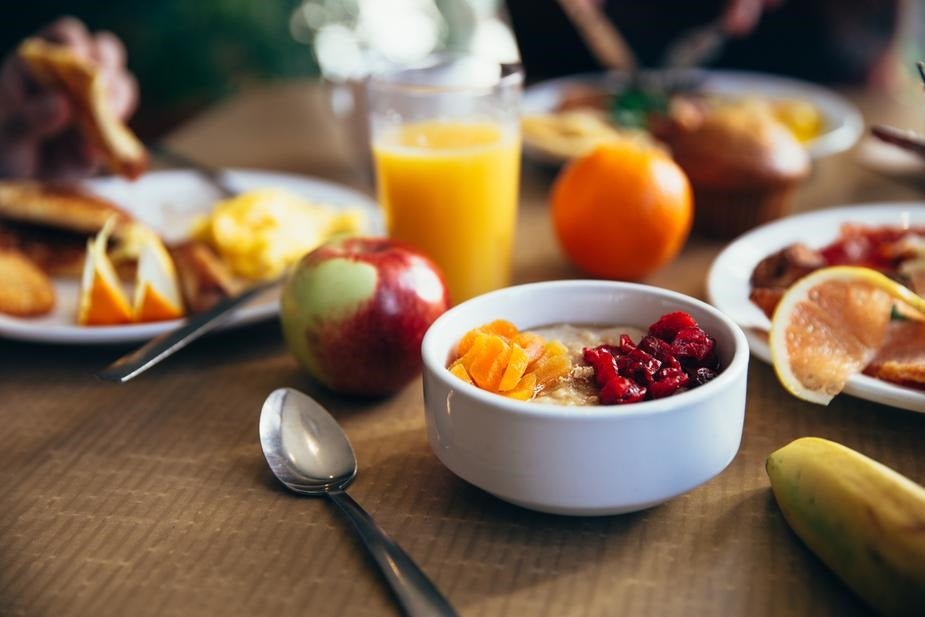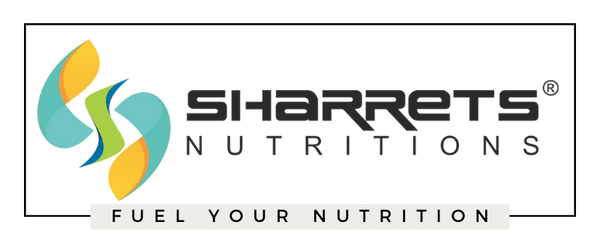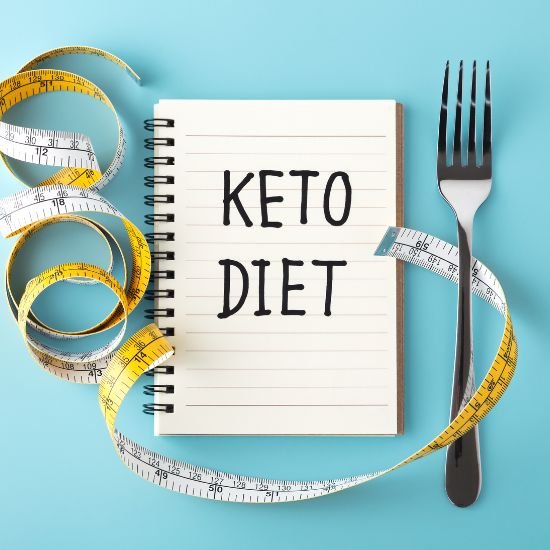
Keto diet food including best keto foods vs worst.
Share
The ketogenic (or “keto”) diet is a very high-fat, very low-carb diet that has gained tons of attention lately for its weight loss benefits. The goal of the keto diet is to enter and then stay in a metabolic state called ketosis, in which you burn fat for energy, rather than carbohydrates (glucose).
In the typical diet, our bodies (brains and muscles) are fueled by glucose (a type of sugar) that we get from eating carbohydrate foods. But if those carbs stop coming in and glucose levels drop, we can use our fat for fuel.
In fact, once all our our reserved glucose/glycogen runs out after several days on a low-carb, keto diet, our bodies create compounds called ketone bodies (or ketones) from our own stored body fat, as well as from fats in our diet. In addition, researchers have discovered that ketones contain main benefits, such as fat loss, suppressing our appetites, boosting mental clarity and lowering the risk for a number of chronic diseases.
Intrigued? If so, before starting a ketogenic diet, it’s critical to get to know a properly constructed keto diet food list and also understand how much of each type of food group you consume.
It starts with limiting carbohydrate intake to just 20–30 net grams per day. “Net carbs” describes the amount of carbs remaining once dietary fiber is taken into account. Because fiber is indigestible once consumed, simply don’t count grams of fiber toward their daily carb allotment. So that means subtracting grams of fiber from total carb games, to give you the total net carbs.
On a standard keto diet, fats provide about 70 percent to 80 percent of total daily calories, protein about 15 percent to 20 percent, and carbohydrates just around 5 percent.
What Does a Keto Meal Plan Look Like?
Here are examples of high-fat, low-carb foods on the keto diet food list:
- Your keto diet meal plan should contain high amounts of healthy fats (up to 80 percent of your total calories!), such as olive oil, coconut oil, grass-fed butter, palm oil, and some nuts and seeds. Fats are a critical part of every recipe because fat is what provides energy and prevents hunger, weakness and fatigue.
- Keto meals also need all sorts of non-starchy vegetables. What vegetables can you eat on a ketogenic diet without worrying about increasing your carb intake too much? Some of the most popular keto vegetables include broccoli and other cruciferous veggies, all types of leafy greens, asparagus, cucumber, and zucchini.
- In more moderate amounts, foods that are high in protein but low- or no-carb, including grass-fed meat, pasture-raised poultry, cage-free eggs, bone broth, wild-caught fish, organ meats and some full-fat (ideally raw) dairy products.
-
What about fruits? As you will, you’ll need to cut down on your typical fruits, as keto fruits are far and few between.
On the other hand, the types of foods you’ll avoid eating on the keto, low-carb food plan are likely the same ones you are, or previously were, accustomed to getting lots of your daily calories from before starting this way of eating. This includes items like fruit, processed foods or drinks high in sugar, those made with any grains or white/wheat flour, conventional dairy products, desserts, and many other high-carb foods (especially those that are sources of “empty calories”).
Detailed Keto Diet Food List
If you’re new or just still learning the ropes for the keto diet food list, your biggest questions probably revolve around figuring out just what high-fat low-carb foods you can eat on such a low-carb, ketogenic diet.
Overall, note that the bulk of calories on the ketogenic diet are from high natural fats foods along with a moderate amount of protein foods.
Those that are severely restricted are all foods that provide lots of carbs, even kinds that are normally thought of as “healthy,” like whole grains, for example.
The biggest shifts in your daily habits will be how you food shop and how you cook, and recipes that are ketogenic need to be followed rather than just low-carb. You will require the healthy fats in order to get into ketosis and have enough energy without the carbs. And you will be considerably more energetic and healthier when cooking your own keto-friendly food rather than buying supposedly keto foods off the shelf.
Therefore, please ensure that you understand the keto diet rules and start stocking up with the ketogenic grocery list.
Best Keto Foods for Your Keto Grocery List:
Healthy Fats for Your Keto Diet
Most healthy fats contain zero net carbs, especially the kinds listed below w, which also have other health advantages. Fats should be included in high amounts with every meal throughout the day.
- Healthy keto fats include saturated fats, monounsaturated fats and certain types of polyunsaturated fats (PUFAs), especially omega-3 fatty acids. It’s best to include all types in your daily regimen, with an emphasis on saturated fats, especially compared to PUFAs.
- MCT oil, cold-pressed coconut, palm fruit, olive oil, flaxseed, macadamia and avocado oil — 0 net carbs per tablespoon
- Butter and ghee — 0 net carbs per tablespoon
- Lard, chicken fat or duck fat — 0 net carbs per tablespoon
Keto Diet Proteins
Animal proteins (meat, fish, etc.) have very little, if any, carbs. You can consume them in moderate amounts as needed to control hunger. Overall, rather than leaner meats , choose fattier ones. For example, chicken thighs and legs are preferable to chicken breasts because they contain much more fat. We’ve got quick keto chicken recipes to help.
- Grass-fed meats and other types of fatty cuts of meat (try to avoid antibiotics in beef) , including lamb, goat, veal, venison and other game. Grass-fed, fatty meat is preferable because it’s higher in quality omega-3 fats — 0 grams net carbs per 5 ounces
- Organ meats including liver — around 3 grams net carbs per 5 ounces
- Poultry, including turkey, chicken, quail, pheasant, hen, goose, duck — 0 grams net carbs per 5 ounces
- Cage-free eggs and egg yolks — 1 gram net carb each
- Fish, including tuna, trout, anchovies, bass, flounder, mackerel, salmon, sardines, etc. — 0 grams net carbs per 5 ounces
Non-Starchy Vegetables
- All leafy greens, including dandelion or beet greens, collards, mustard, turnip, arugula, chicory, endive, escarole, fennel, radicchio, romaine, sorrel, spinach, kale, chard, etc. — range from 0.5–5 net carbs per 1 cup
- Cruciferous veggies like broccoli, cabbage, Brussels sprouts and cauliflower — 3–6 grams net carbs per 1 cup
- Celery, cucumber, zucchini, chives and leeks — 2–4 grams net carbs per 1 cup
- Certain fermented foods like sauerkraut, kimchi, dairy or coconut kefir (also beneficial for gut health) — 1–2 grams net carbs per 1/2 cup
- Fresh herbs — close to 0 grams net carbs per 1–2 tablespoons
- Veggies that are slightly higher in carbs (but still low all things considered) include asparagus, mushrooms, bamboo shoots, bean sprouts, bell pepper, sugar snap peas, water chestnuts, radishes, jicama, green beans, wax beans, tomatoes — 3–7 grams net carbs per 1 cup raw
Fat-Based Fruit
- Avocado — 3.7 grams net carbs per half
Snacks
- Bone broth (homemade or protein powder) — 0 grams net carbs per serving
- Beef or turkey jerky — 0 grams net carbs
- Hard-boiled eggs — 1 gram net carb
- Extra veggies (raw or cooked) with homemade dressing — 0–5 grams net carbs
- 1/2 avocado with sliced lox (salmon) — 3–4 grams net carbs
- Minced meat wrapped in lettuce — 0–1 grams net carbs
- Shirataki noodles (97 percent water!) — 0–1 grams net carbs
Condiments
- Spices and herbs — 0 grams net carbs
- Hot sauce (no sweetener) — 0 grams net carbs
- Apple cider vinegar — 0–1 grams net carbs
- Unsweetened mustards — 0–1 grams net carbs
- Poppy seeds — 0 grams net carbs
Drinks
- Water — 0 grams net carbs
- Unsweetened coffee (black) (see our keto coffee recipe ) and tea; drink in moderation since high amounts can impact blood sugar— 0 grams net carbs
- Bone broth — 0 grams net carbs
Keto Foods to Limit — Eat Only Occasionally To Stay In Ketosis:
Full-Fat Dairy
Dairy products should be limited as well, to only “now and then” due to containing natural sugars. Higher fat, hard cheeses have the low carbs, while soft cheeses & low-fat milk and have much more carbs .
- Full-fat cow’s and goat milk (ideally organic and raw) — 11–12 net carb grams per one cup serving
- Full-fat cheeses — 0.5–1.5 net carb grams per one ounce or about 1/4 cup
- Full-fat cottage cheese — 5 net carb grams per 1/2 cup
Medium-Starchy Vegetables
- Sweet peas, artichokes, okra, carrots, beets and parsnips — about 7–14 net carb grams per 1/2 cup cooked
- Yams and potatoes (white, red, sweet, etc.) — sweet potatoes have the least carbs, about 10 net carb grams per 1/2 potato; yams and white potatoes can have much more, about 13–25 net carb grams per 1/2 potato/yam cooked
Legumes and Beans
- Chickpeas, kidney, lima, black, brown, lentils, hummus, etc. — about 12–13 net carb grams per 1/2 cup serving cooked
- Soy products, including tofu, edamame, tempeh — these foods can vary in carbohydrates substantially, so read labels carefully; soybeans are fewer in carbs than most other beans, with only about 1–3 net carb grams per 1/2 cup serving cooked
Nuts and Seeds
- Almonds, walnuts, cashews, sunflower seeds, pistachios, chestnuts, pumpkin seeds, etc. — 1.5–4 grams net carbs per 1 ounce; cashews are the highest in carbs, around 7 net grams per ounce
- Nut butters and seed butters — 4 net carbs per 2 tablespoons
- Chia seeds and flaxseeds — around 1–2 grams net carbs per 2 tablespoons
Fruits
- Berries, including blueberries, strawberries, blackberries, raspberries — 3–9 grams net carbs per 1/2 cup
- Asian pears — 8–9 net carbs per pear
Snacks
- Protein smoothie (stirred into almond milk or water)
- 7–10 olives
- 1 tablespoon nut butter or handful of nuts
- Veggies with melted cheese
Condiments
Most condiments below range from 0.5–2 net carb grams per 1–2 tablespoon serving. Check ingredient labels to make sure added sugar is not included, which will increase net carbs. (Erythritol & Stevia extract will become your go-to sweeteners as neither raise the blood sugar — combine for a more natural sweet taste and, remember, a little goes a long way!)
- No sugar added ketchup or salsa
- Sour cream
- Mustard, hot sauces, Worcestershire sauce
- Lemon/ lime juice
- Soy sauce
- Salad dressing (ideal to make your own with vinegar, oil and spices)
- Pickles
- Stevia (natural sweetener, zero calorie and no sugar)
- Erythritol
Drinks
Consume the unsweetened drinks below only moderately, having just 1–2 small servings per day. These will typically contain between 1–7 net carb grams per serving.
Fresh vegetable and fruit juices — homemade is best to limit sugar; use little fruit to reduce sugar and aim for 8 ounces daily at most
Unsweetened coconut or almond milk (ideal to make your own)
Bouillon or light broth (this is helpful with electrolyte maintenance)
Water with lemon and lime juice.
Foods to Avoid When on a Keto Diet — NEVER Eat These:
Any Type of Sugar
One teaspoon of sugar has about 4 net grams of carbs, and every tablespoon has about 12 net grams.
White, brown, cane, raw and confectioner’s sugar.
Syrups like maple, carob, corn, caramel and fruit
Honey and agave
Any food made with ingredients such as fructose, glucose, maltose, dextrose and lactose
Any and All Grains
One slice of bread, or small serving of grains, can have anywhere from 10–30 net grams of carbs! Cooked grains and cereals typically have 15–35 g per 1/4th cup non-cooked, depending on the kind.
Quninoa , Pilaf , Wheat, oats, all rice (white, brown, jasmine), couscous, etc.
Corn and all products containing corn, including popcorn, tortillas, grits, polenta, corn flour and corn meal
All types of products made with flour, including bread, bagels, rolls, muffins, pasta, etc.
Most Non-Berry Fruits
Most fruits simply contain too many carbs and can prevent you from reaching your goals if you eat them. So when on keto, stay away from “sweet fruits,” especially mangoes, papayas, bananas, oranges and apples.
Nearly All Processed Foods
Crackers, chips, pretzels, etc.
All types of candy
All desserts like cookies, cakes, pies, ice cream
Pancakes, waffles and other baked breakfast items
Oatmeal and cereals
Snack carbs, granola bars, most protein bars or meal replacements, etc.
Canned soups, boxed foods, any prepackaged meal
Foods containing artificial ingredients like artificial sweeteners (sucralose, aspartame, etc.), dyes and flavors
Sweetened and Caloric Beverages
Soda
Alcohol (beer, wine, liquor, etc.)
Sweetened teas or coffee drinks
Milk and dairy replacements (cow’s milk, soy, almond, coconut, lactaid, cream, half and half, etc.)
Fruit juices
Keto Diet Meal Plan – The Ketogenic Lifestyle
As you can see above, there’s a surprising number of approved keto foods, especially for such a high-fat diet. The ketogenic diet menu centres around grass fed meats , healthy fats, non-starchy vegetables and fat-based fruit (avocado).
As you notice , simple ketogenic meals starts with the healthy fat consideration first, making sure plenty of low-starch vegetables surround the fat along with a moderate protein source. Wild-caught salmon, as a high-fat fish, is a perfect keto choice, and easy keto meals can be a fatty cut of healthy protein like salmon or lamb served with plenty of green veggies.
Because of its status of a filling, healthy fat - For a keto breakfast, the egg is often the perfect main ingredient For a quick keto breakfast, you may choose a keto smoothie using a keto protein powder. Use an approved keto fruit like frozen blueberries and some coconut milk, and then you have a delicious start to your day.
















